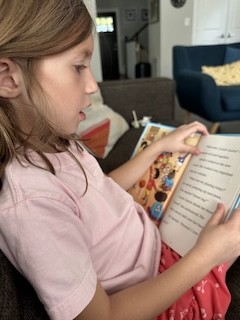| Teacher question: Could you comment on first grade small group reading instruction, specifically round robin, "whisper" reading, echo reading, choral reading, etc.? You have mentioned partner reading and echo reading. Is there research to clearly favor one over another? My practice is to use a variety, although not round robin with the whole class, but my principal is pushing student driven discussion, partner reading, with the goal of student engagement. What does the research say? Shanahan response: Beginning readers cannot read silently. They need to read aloud to be able to figure out the words and to understand the author’s message; so round robin, whisper/mumble reading, choral reading all might have a place—for a little while. Several of these techniques are also useful throughout the grades to help students build oral reading fluency (e.g., repeated reading, echo reading, paired reading, reading while listening, neurological impress). There are no studies that I am aware of that compare these with beginning readers, but in fluency studies they all tend to do pretty well: each has students reading aloud, with repetition, and with some kind of feedback or guidance. Until beginning readers are able to read silently with understanding, ALL of these techniques (including the much reviled round robin reading) could have a profitable place in your classroom. If the point is to get kids started with reading, choral reading makes great sense. But you want to try to get away from that soon, because kids need to figure out/remember the words themselves (and choral reading allows one to pretend to do that). If students are a bit further along, and the point is to guide kids through a story to begin building reading comprehension, then round robin can make sense, for a little while. Whisper reading or mumble reading tend to be used when teachers are trying to get kids to shift from oral to silent reading (it is a transformational strategy). It is important to move on from round robin quickly not because the reading practice it provides is so bad, but because there is so little of it. Not much reading happens on a per child basis in round robin, so methods that allow more than one kid to read are a better choice. Studies suggest that the only one doing any learning during round robin is the child who is reading; that’s great for the reader of the moment, but it is a big waste of time for the others. When kids are independent enough to read aloud on their own (or when paired with another kid without the teacher), then paired reading and those other fluency builders become essential tools. While they all work, I use paired reading most often—again, for efficiency sake; with that approach kids have to do the reading and half the class can practice at the same time. Think of the various things you need to accomplish to reach the learning goals:
Select instructional activities that would facilitate each of these goals… considering research (what has worked successfully), efficiency (which methods allow the most reading experience/instruction for the most kids), and classroom environment (balancing efficient routines that kids can negotiate quickly and easily with variation of activities to hold their interest). |
The Best Oral Reading Techniques for Beginners
What Are your thoughts?
Leave me a comment and I would like to have a discussion with you!
Copyright © 2025 Shanahan on Literacy. All rights reserved. Web Development by Dog and Rooster, Inc.






Comments
See what others have to say about this topic.